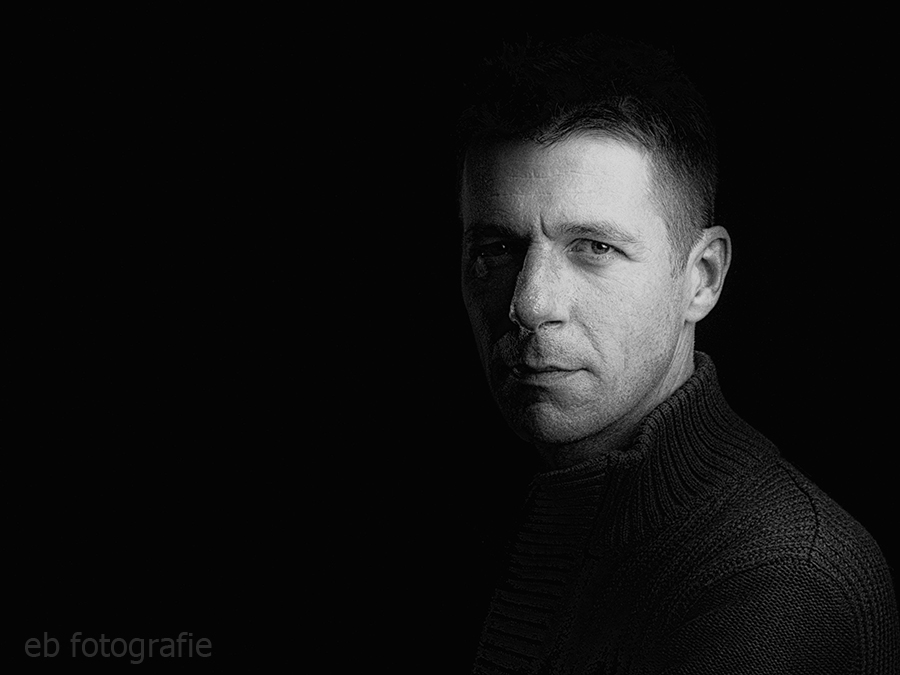Self-portrait in a tiny studio
The other night I made a self-portrait. It was part of a study for a larger concept. I will come back to that in another article. For now I want to explain what I did to create this image:

First of all: this picture is taken in my own living room. The space I had to stand in was not larger than 1m X 1m.
To make a background real black there is one easy way: don't spill light on it! Sounds easy, doesn't it? The way I make sure the background is real dark I first make a picture wiithout flash. I turn down the aperture to, in this case, f/8. Checking the result tells me the background is black. Of course: I did use a black backdrop but even that will not turn black on your image if you spill light on it.
Second thing to do is to make sure your distance to the background is at least twice the distance between you and the main light source. This has everything to do with the Inverse Square Law wich I will explain in another article. In short: the light of the main source will fall off real quick so the subject (me) is lit and the background isn't.
The main light source in this image is a 40x60 cm softbox. Positioned 0,5meter above me, pointing down in a 45 degree angle (that's why my left shoulder is lit).
I used a second light on my right-hand side. This was a spot with a grid. I used the grid to make sure all the light was aimed at me. Turning the power of the flash to it's minimum created this nice rim light.
Ok, so far the lights.
How to focus when you're making a picture of yourself?!
For focussing I use a light-stand. I make sure the top is at the same height as my eyes. Then I position it at the place where I'm going to stand.
Set the camera to autofocus, focus at the top of the light-stand and, most important, switch the camera to manual focus without changing the focus.
Set the self-timer of your camera (in this case I set it to 10 sec), remove the light-stand out of the scene, trigger the camera, get yourself in place, squinch...
That's it!
O, just a little tip: to make sure everything is in focus you better use a little aperture. In this case I used f/8. Apertures larger than f/5.6 will make it difficult to create a good image.
Camera settings: f/8, ISO 200, 1/125sec, 75mm (112 in 35mm film)